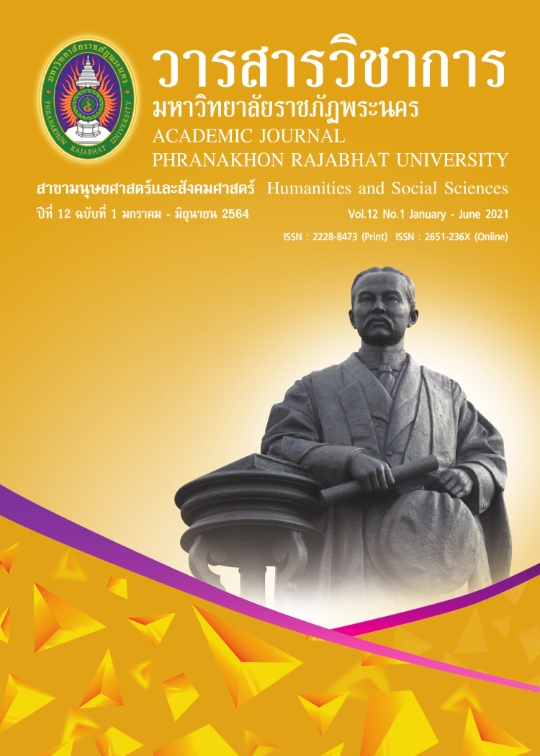FACTORS INFLUENCING THE USE OF MOBILE HEALTH SERVICE IN HOSPITALS
Keywords:
Supply Chain of Health Services, Health Care Supply Chain, Mobile Health ServiceAbstract
This research article were to examine factors influencing effectiveness of healthcare services delivered. Searched all 17 articles from Science Direct, Google Scholar and Emerald 2011-2016. Regarding related literature reviews and synthesis of Health Care Supply Chain indicators were found: Accessibility (9.92percent), easy to learn and use (15.38percent), Security (25 percent), Response (5.77 percent), service (3.85 percent), function (7.69 percent), attentive (3.85 percent), data quality (7.69 percent), user satisfaction (15.38 percent), and expectation (5.77 percent) The security required by most users followed by easy to learn and use. User satisfaction and accessibility were 25 percent, 15.38 percent and 9.92 percent, respectively, using the most Structural Equation Modeling techniques.
References
Al-Saadi, T.A. (2015). Decision making with the analytic hierarchy process. International Journal of Services Sciences (IJSSCI). 1, 83–98.
Alam, M.Z., Hoque, M.D., Hu, W. & Barua, Z. (2020). Factors influencing the adoption of mHealth services in a developing country: A patient-centric study. International Journal of Information Management. 50, 128-143.
Alkhunaizan, A. & Love, S. (2012). What drives mobile commerce? An empirical evaluation of the revised UTAUT model. International Journal of Management and Marketing Academy. 2, 82-99.
Büyüközkan, G. & Çifçi, G. (2012). A combined fuzzy AHP and fuzzy TOPSIS based strategic analysis of electronic service quality in healthcare industry. Expert Systems with Applications. 39, 2341–2354.
Cameron, J.D., Ramaprasad, A. & Syn, T. (2017). An ontology of and roadmap for mHealth research. International Journal of Medical Informatics. 100, 16–25.
Dwivedi, Y.K., Shareef, M.A., Simintiras, A.C., Lal, B. & Weerakkody, V. (2016). A generalised adoption model for services: A cross-country comparison of mobile health (m-health). Government Information Quarterly. 33, 174–187.
Electronic Transactions Development Agency. (2020). Thailand Internet User Behavior 2019. 1st edition. Bangkok: Electronic Transactions Development Agency. (in Thai)
Escobar-Rodríguez, T. & Carvajal-Trujillo, E. (2014). Online purchasing tickets for low cost carriers: An application of the unified theory of acceptance and use of technology (UTAUT) model. Tourism Management. 43, 70-88.
Grover, P., Kar, A.K., & Davies, G. (2018). “Technology enabled Health”–Insights from twitter analytics with a socio-technical perspective. International Journal of Information Management. 43, 85–97.
Hall, C.S., Fottrell, E., Wilkinson, S., & Byass, P. (2014). Assessing the impact of mHealth interventions in low-and middle-income countries–what has been shown to work?. Global Health Action. 7(1), 1-12.
Hoque, R. & Sorwar, G. (2017). Understanding factors influencing the adoption of mHealth by the elderly: An extension of the UTAUT model. International Journal of Medical Informatics. 101, 75-84.
Hsieh, M. & et al. (2018). Application of HFACS, fuzzy TOPSIS, and AHP for identifying important human error factors in emergency departments in Taiwan. International Journal of Industrial Ergonomics. 67, 171–179.
Iwaya, L.H. & et al. (2013). Mobile health in emerging countries: A survey of research initiatives in Brazil. International journal of Medicals Informatics. 82(5), 283-298.
Kitsios, F., Stefanakakis, S., Kamariotou, M. & Dermentzoglou, L. (2019). E-service Evaluation: User satisfaction measurement and implications in health sector. Computer Standards & Interfaces. 63, 16-26.
Liu, C., Zhu, Q., Holroyd, K.A. & Seng, E.K. (2011). Status and trends of mobile-health applications for iOS devices: A developer’s perspective. The Journal of Systems and Software. 84, 2022– 2033.
Liu, F., Ngai, E. & Ju, X. (2019). Understanding mobile health service use: An investigation of routine and emergency use intentions. International Journal of Information Management. 45, 107–117.
Lucivero, F. & Prainsack, B. (2015). The lifestylisation of healthcare? ‘Consumer genomics’ and mobile health as technologies for healthy lifestyle. Applied & Translational Genomics. 4, 44–49.
Meiller, Y., Bureau, S., Zhou, W. & Piramuthu, S. (2017). Adaptive knowledge-based system for health care applications with RFID-generated information. Decis. Support Syst. 51, 198–207.
Ministry of Public Health Department of Health Service Support. (2016). Strategy to Develop Thailand as an International Health Center (MEDICAL HUB) (2017 - 2026). Retrieved October 18, 2019, from http://203.157.7.120/fileupload/2560-102.pdf (in Thai)
Mosadeghrad, A.M. (2014). Factors influencing healthcare service quality. International Journal of Health Policy and Management. 3, 77-79.
National Strategy 2018-2037. Retrieved September 29, 2019, from http://www.ratchakitcha.soc.go.th/
DATA/PDF/2561/A/082/T_0001.PDF (in Thai)
Office of the Permanent Secretary, Ministry of Public Health Information and Communication Technology Center. (2017). Health Information Technology Strategy Ministry of Public Health (2017 - 2026). Nonthaburi. (in Thai)
Paoin, W. (2017). Thailand Health 4.0 challenges and opportunities. Faculty of Medicine, Thammasat University. Journal of the Thai Medical Informatics Association. 1, 31-36. (in Thai)
Sanner, T.A., Roland, L.K. & Braa, K. (2012). From pilot to scale: Towards an mHealth typology for low-resource contexts. Health Policy and Technology. 1, 155-164.
Thawillarp, S. (2017). Mobile health applications Bureau of Epidemiology (mHealth), Department of Disease Control, Ministry of Public Health [PowerPoint slides]. Retrieved September 29, 2019, from https://www.slideshare.net/Supharerk Thawillarp/overview-of-mhealth-thai-version (in Thai)
Thesharat, S. & Sintusoaw, S. (2010). Simulation of a Queueing System for Reducing Customer Waiting Time Case study:Trakarn Phuetphon Hospital, Ubon Ratchathani Province. Industrial Engineering Network Conference 2010 (IE-Network 2010), Sunee Grand Hotel & Convention Center, Ubon Ratchathani, October 13 - 15, 214 – 212. (in Thai)
Zhao, Y., Ni, Q. & Zhou, R. (2018). What factors influence the mobile health service adoption? A meta-analysis and the moderating role of age. International Journal of Information Management. 43, 342-350.
Downloads
Published
How to Cite
Issue
Section
License
"บทความวิชาการในวารสารฉบับนี้ ถือเป็นความรับผิดชอบของผู้เขียนเท่านั้น"
สงวนลิขสิทธิ์ตามพระราชบัญญัติลิขสิทธิ์




